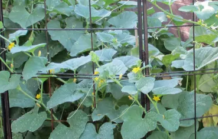We have been receiving numerous reports of brown patch showing up on tall fescue. This disease is favored by warm night temperatures and extended periods of leaf wetness. If you go outside in the morning and the lawn is covered with dew and the temperature is in the high 60s or higher, it means that conditions are getting right for brown patch. The fungus is primarily a leaf pathogen and does not attack the roots.
During severe outbreaks, the fungus may invade the lower leaf sheaths and crown and kill plants. But in most cases, the turfgrass can recover from brown patch. This recovery may take two to three weeks, depending on weather.
There is no way to eliminate brown patch from a lawn. It will persist indefinitely in the soil. Therefore, the disease is not carried from one lawn to another. In almost all cases, the limiting factor for brown patch development is the weather, not the amount of fungal inoculum.
Although you can’t eliminate the fungus, cultural practices – especially irrigation – can help control it. Don’t water in the evening; instead, water early in the morning. This will help decrease the number of hours the leaf tissue remains wet and susceptible to infection. The frequency of irrigation is not as important as the time of day you do it. Don’t overfertilize and certainly don’t fertilize when brown patch is active. Also, don’t get your seeding or overseeding rates too high.
Fungicides can be effective in preventing brown patch, but the two most commonly used products (Heritage and ProStar) are expensive and not available in small quantities to the general public. Homeowners do have access to some effective products including triadimefon (Green Light Fung-Away), propiconazole (Bayer Fungus Control for Lawns, Fertilome Liquid Systemic Fungicide II) and myclobutanil (Immunox). Of the three, triadimefon may be the fungicide of choice because it protects the turf longer (3 to 5 weeks rather than 2 weeks). But my suggestion is not to use fungicides unless you want to maintain a blemish-free yard and are willing to pay for it. In those cases, you would need to be on a preventative spray program, which is very expensive, rather than waiting for symptoms and applying as a curative. These products do not cure an infection already present but are only effective as a preventative.
Applications should begin in mid-June and continue through August.
Remember that more often than not the turf will recover from brown patch. (Ward Upham)




